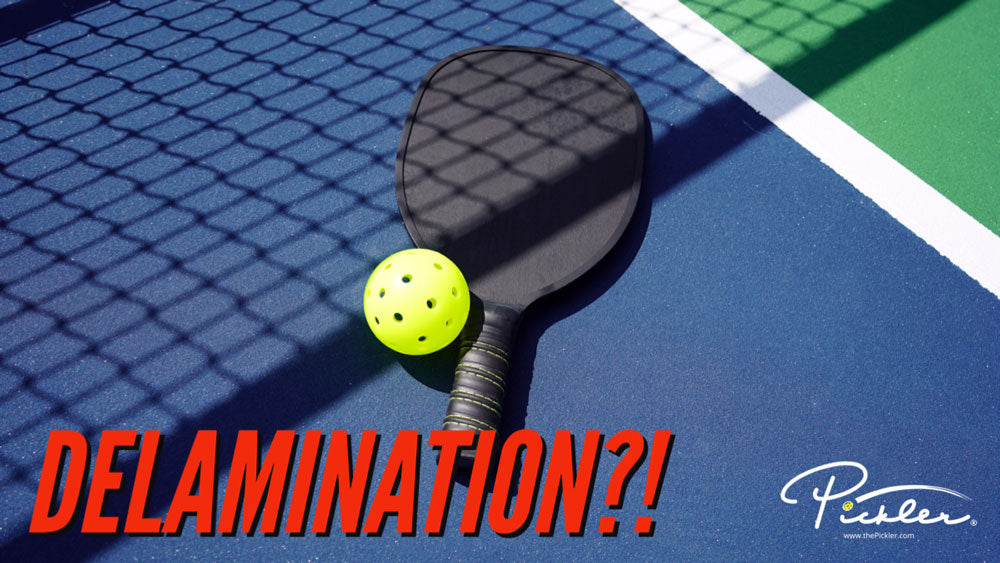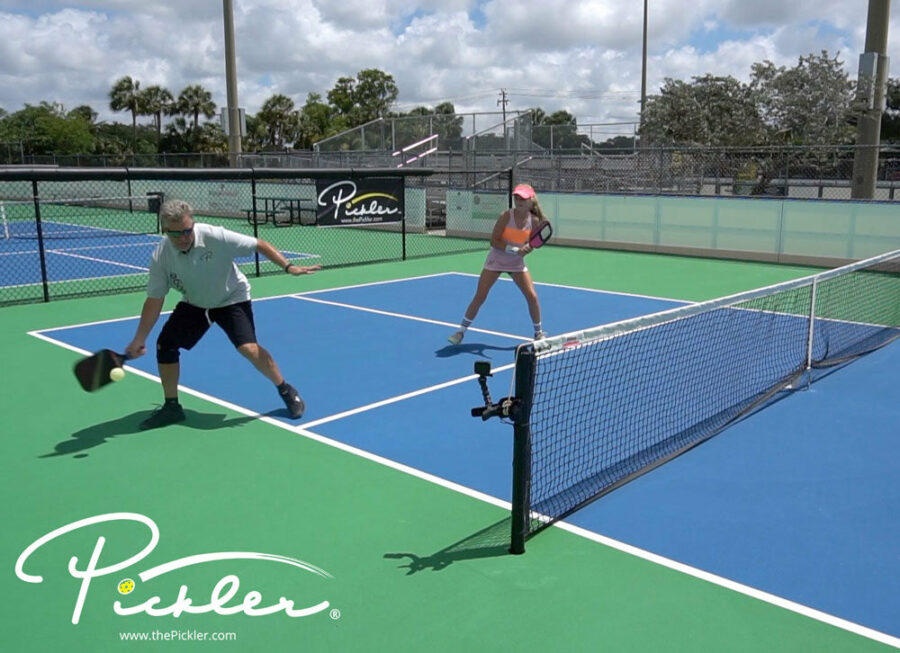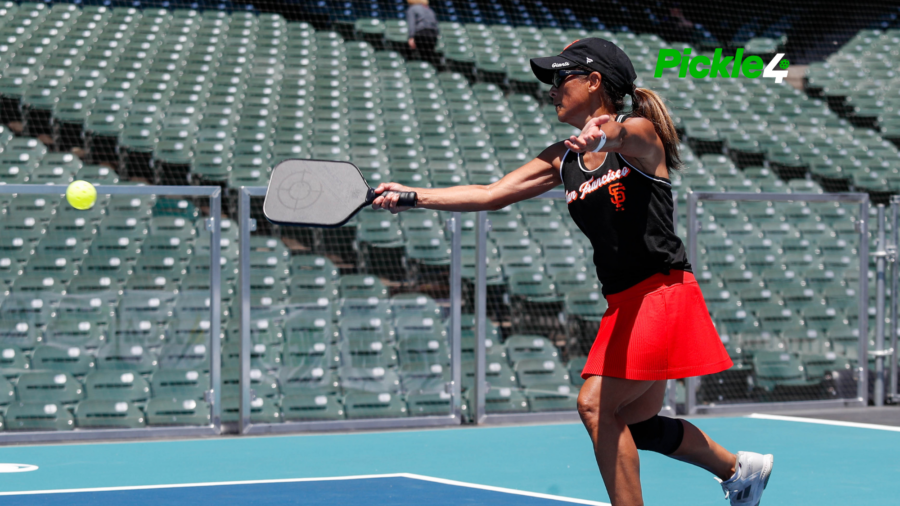In recent weeks, there has been a flurry of discussion, tweets, debates, and challenges related to delaminated pickleball paddles. Pickleball pros, in particular, have voiced concerns over delaminated pickleball paddles and their effects on the sport at the highest competitive levels.
This article provides a high-level summary of what is a delaminated pickleball paddle (including signs of delamination), why a delaminated pickleball paddle is a problem on the court, and what the potential proposed solutions could be.
What Is a Delaminated Pickleball Paddle?
A delaminated pickleball paddle is a paddle that has layers of the paddle separating or coming apart. In particular, the core of the paddle (thermoformed carbon paddles) separates from the outer layer. This can happen when the glue that holds the layers of the pickleball paddle together breaks down, loses its effectiveness, or wasn’t applied effectively (or enough). The result is a small gap of space between the core and the outer layers of the pickleball paddle.
A delaminated pickleball paddle can be identified by the following signs:
- Soft spots: Press on the surface of the pickleball paddle to check for any soft spots. If you feel any areas that are softer than others, this can be a sign that the layers of the pickleball paddle are separating.
- Strange sound: Tap the pickleball paddle with your finger or hit a ball with the paddle and listen for any unusual sounds. A delaminated pickleball paddle may produce a hollow or dull sound when struck. For an example, see the video below.
- Bubbling or peeling: Check the surface of the pickleball paddle for any bubbling or peeling. This can indicate that the layers of the pickleball paddle are separating.
- Uneven surface: Run your hand over the surface of the pickleball paddle to check for any unevenness. If the surface feels bumpy or lumpy, this could potentially be a sign of delamination.
Why Is a Delaminated Pickleball Paddle a Problem?
A delaminated pickleball paddle is a problem because it results in an increased amount of power when striking the pickleball. Specifically, the space between the core and the separated outer layers creates a spring-like effect when hitting a pickleball. In other words, the outer layer acts like a trampoline for the pickleball. This results in more power than permitted during the paddle testing and approval process by the governing body for the sport, USA Pickleball. Further, this additional power can be dangerous on the pickleball court—especially since players are so close at the Kitchen line.
To note, delamination of a pickleball paddle typically happens over time, as it usually takes some wear and tear to wear down the glue between the core and the outer layers. So, unlike most traditional/historical pickleball paddles, which would wear down and deteriorate over time, delaminated pickleball paddles actually generate more power and pace over time due to the springy effect. As a result, a pickleball paddle may initially pass the testing and approval process and then, later, delaminate and fall outside the parameters that are set by USA Pickleball.
Lastly, given that the pickleball pros are playing for money and their livelihoods, they should all be held to the same set of rules and standards. So, enforcing the rules around pickleball paddles—at all stages of life of a pickleball paddle, whether new or used—will be important to preserving the integrity of the pro game.
Potential Solutions for Delaminated Pickleball Paddles
In light of the controversy around delaminated pickleball paddles, there have been discussions at the highest levels of how to solve the problem—especially given some of the dangers involved with the excess power. Such proposed solutions include:
- Craft new rules regarding paddle testing and design stronger testing methods to better test the root cause of the issue—the appropriate level of power for a pickleball paddle (which would hopefully address the issue at the source, which is at the manufacturing level);
- Do more testing of pickleball paddles at the pro levels, including on-site testing at pickleball tournaments and other events;
- Encourage players (pros and amateurs alike) to do more proactive inspection of their pickleball paddles to look for signs of delamination and other signs of wear and tear, and replace their respective pickleball paddles if they identify an issue; and
- Encourage players (pros and amateurs alike) to care of their pickleball paddles to prevent premature delamination or other wear and tear (for instance, storing pickleball paddles in a dry place away from moisture, avoiding exposing pickleball paddles to extreme temperatures, and not overloading pickleball paddles with tension).
Have you noticed any delaminated pickleball paddles on the court? What solutions would you propose?




